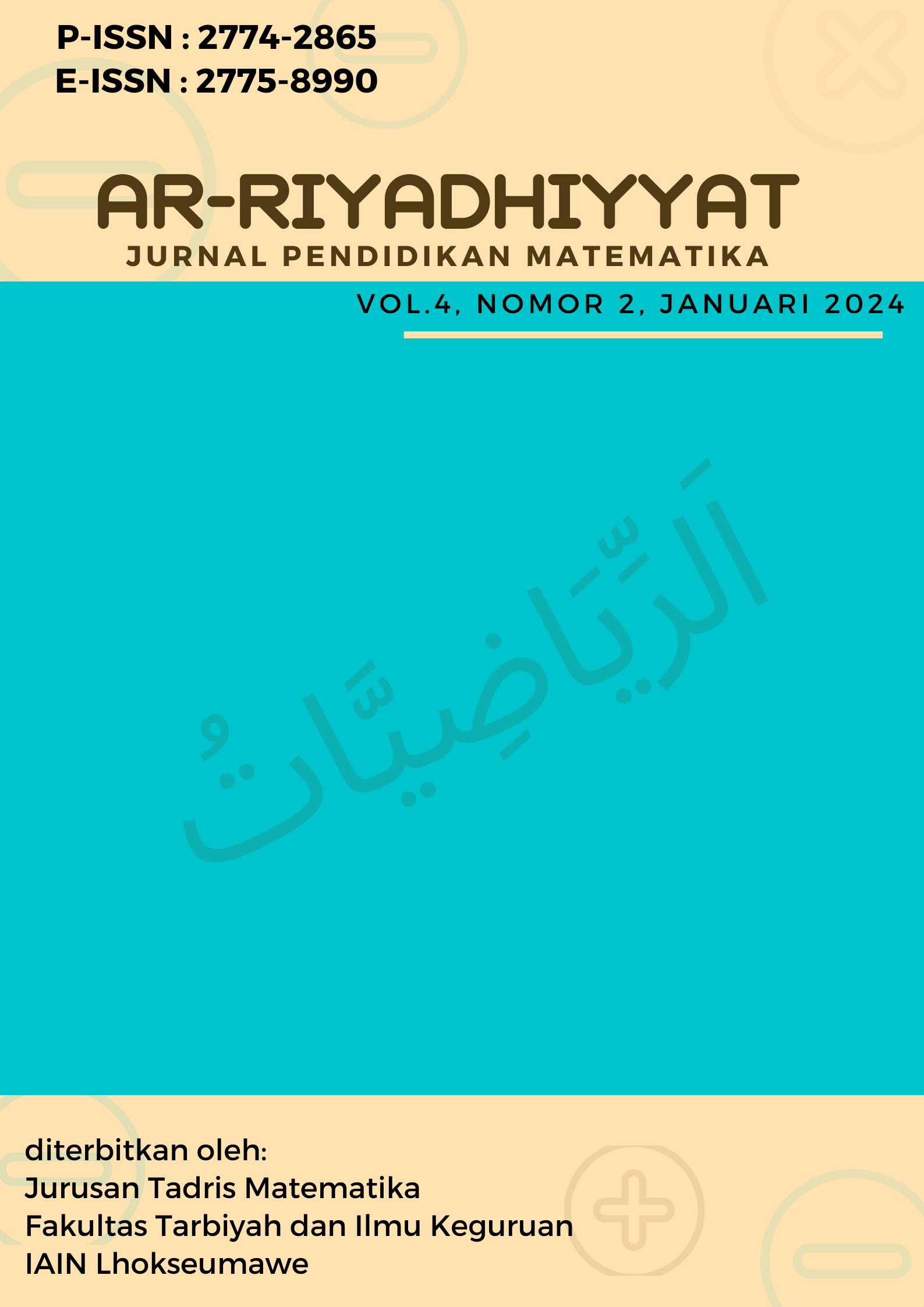Mengembangkan Pemahaman Konsep Perkalian Dan Hasil Belajar Pada Siswa Sekolah Dasar Syamtalira Aron Melalui Pendekatan RME
Main Article Content
Asmaul Husna
Samsul Bahri
Nurul Akmal
The ability to operate the multiplication of calculation is one of the important competencies that should be the goal of mathematics teaching for elementary school students. The operation of multiplying natural numbers in mathematics learning in elementary schools must be attempted so that it can be mastered well. However, many elementary school students still find that there are still no multiplication calculation operations. The research aims to apply the Realistic Mathematics Education (RME) approach to solving the problem of calculating the multiplication of natural numbers for grade 2 elementary school students. This research is quantitative research. Based on data obtained from the test questions, the ability to understand the concept of multiplication in the first post-test was 87% and in the second post-test 92% of the students completed it, and as many as 37% of students experienced an increase and increase in their understanding of the concept in the high category, 42% in the medium category and 21% in the medium category. low. The results of the research show that the process of increasing understanding of the concept of multiplication increases and student learning outcomes increase.
Amellia, Z., Fonna,M., dan Isfayani, E. (2022). Peningkatan Kemampuan Berpikir Kritis Matematis Siswa dengan Menggunakan Model Pembelajaran Inkuiri pada Siswa Kelas VII MTsS Jabal Nur. Ar-Riyadhiyyat: Jurnal Pendidikan Matematika, Vol.3 No.1 Juli 2022
Arikunto Suharsimi. 2006. Prosedur Penelitian Suatu Pendekatan Praktek. Jakarta: PT. Rineka Cipta.
Carter, S. 2010. Infusing Math with Literacy. Reading Today, in the Classroom.
Erdogan, F., & Sengul, S. 2014. “A Study on the Elementary School Students’ Mathematics Self Concept.” Procedia - Social and Behavioral Sciences 596–601. doi: https://doi.org/10.1016/j.sbspro.2014. 09.249.
Hadi, Sutarto. 2017. Pendidikan Matematika Realistik. Jakarta: Rajawali Press.
Karunia EP dan Mulyono. 2017. “Analisis Kemampuan Pemahaman Konsep Siswa Kelas VII Berdasarkan Gaya Belajar Dalam Model Knisley.” Pp. 337–46 in PRISMA, Prosiding Seminar Nasional Matematika.
Mardiah, S., Nuraini, Azmi, N. (2023). Pengembangan Pembelajaran Matematika Realistik Berbasis Etnomatematika Aceh. Ar-Riyadhiyyat: Jurnal Pendidikan Matematika, Vol.3 No.2 Januari 2023
Ningsih, S. 2014. “Realistic Matematics Education: Model Alternatif Pembelajaran Matematika Sekolah.” JPM IAIN Antasari 1(2).
Nurkamilah, Milah. 2018. “Mengembangkan Literasi Matematika Siswa Sekolah Dasar Melalui Pembelajaran Matematika Realistik Indonesia.” Jurnal THEOREMS (The Original Research of Mathematics) 2(2):70–79.
Pangabean. L. 1996. Penelitian Pendidikan. Bandung: UPI Bandung.
Rahmatika, Khairiani, dan Akmal, N. (2022). Analisis Kemampuan Pemecahan Masalah Matematika Ditinjau Dari Gaya Belajar Siswa. Ar-Riyadhiyyat: Jurnal Pendidikan Matematika, Vol.3 No.1 Juli 2022
Rubiyanto, Nanik. 2010. Strategi Pembelajaran Holistik Di Sekolah. Jakarta: Prestasi Pustaka.
Shoimin, A. 2014. 68 Model Pembelajaran Inovatif Dalam Kurikulum 2013. Yogyakarta: Ar-Ruzz Media.
Sudjana N. 2012. Penilaian Hasil Proses Belajar Mengajar. Bandung: PT Remaja Rosdakarya.
Susilo, F. 2012. Landasan Matematika. Yokyakata: Ghara Ilmu.
Treffers, A. 1991. Didactical Background of a Mathematics Program for Primary Education. Dalam Strefland, L. (Ed). Realistic Mathematics Education in Primary School. Ultec: Freudenthal Institute.
Treffers, A. n.d. “Three Dimensions. A Model of Goal and Theory Description in Mathematics Instruction – The Wiskobas Project.” 1987. doi: doi.org/10.1007/978-94-009-3707-9.




